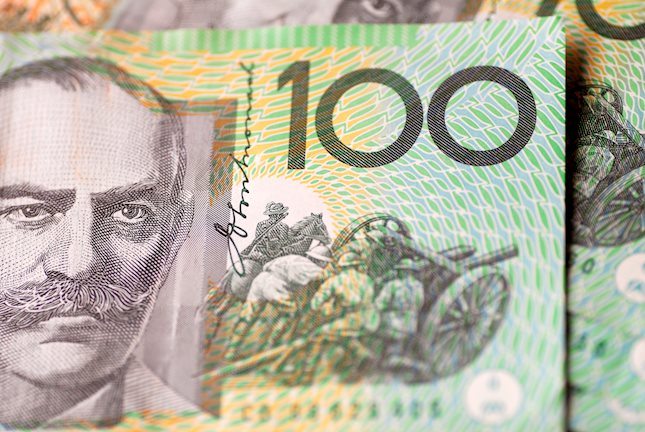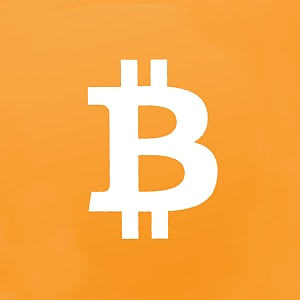- The Pound Sterling moves higher against the US Dollar as the Fed is expected to begin reducing interest rates in September.
- UK annual headline inflation has returned to the desired rate of 2%.
- Investors await the US ISM Manufacturing PMI for fresh guidance on interest rates.
The Pound Sterling (GBP) performs strongly against its major peers in Monday’s New York session. The British currency strengthens as investors remain uncertain about when the Bank of England (BoE) will start reducing interest rates.
Headline inflation in the United Kingdom (UK) has already returned to the desired rate of 2%. However, BoE policymakers see price pressures in the service sector as a preferred inflation measure, which is significantly higher than what is needed to gain confidence for rate cuts.
Currently, financial markets expect that the BoE will begin lowering interest rates from the August meeting.
Meanwhile, the Pound Sterling is expected to remain uncertain ahead of the UK elections outcome, which will kick off on July 4. According to the latest exit polls, the opposition Labor Party is expected to win from UK Prime Minister Rishi Sunak-led Conservative Party.
Daily digest market movers: Pound Sterling will be on toes ahead of UK elections outcome
- The Pound Sterling exhibits a strong performance against the US Dollar (USD). The GBP/USD pair moves higher to 1.2680 as the US Dollar declines after the United States (US) Personal Consumption Expenditures Price Index (PCE) report for May showed that price pressures declined expectedly. Annual core PCE inflation, the Federal Reserve’s (Fed) preferred inflation measure, decelerated to 2.6% from the prior release of 2.8%.
- The expected decline in the US inflation prompts expectations of Fed rate-cut bets for September. According to the CME FedWatch tool, 30-day Federal Fund futures pricing data shows that the probability for rate cuts in September is 63.4%. The data also shows that the Fed will deliver two rate cuts this year against one signaled by officials in their latest dot plot.
- Fed officials continue to argue in favor of keeping interest rates at their current levels until they get evidence that inflation will decline to the desired rate of 2%. The Fed wants to see inflation decline for months before pivoting to policy-normalization.
- Last week, Atlanta Fed Bank President Raphael Bostic said rate cuts would become appropriate when they are convinced that inflation is on a clear path towards 2%. When asked about a concrete timeframe for rate cuts, Bostic said: "I continue to believe conditions will likely call for a cut in the federal funds rate in the fourth quarter of this year," Reuters reported.
- This week, the US Dollar is expected to deliver a volatile performance as the official ISM Purchasing Managers’ Index (PMI) and employment data for June are scheduled for release. Meanwhile, the ISM has reported weak US Manufacturing PMI for June. The Manufacturing PMI, which gauges activities in the factory sector, unexpectedly declined to 48.5. Economists expected the factory activity to improve to 49.1 from the prior release of 48.7. A figure below the 50.0 threshold is considered as contraction in manufacturing activities.
- Inflation in the manufacturing sector also dropped as the Prices Paid index, which indicates prices paid for inputs such as raw materials and wages, expanded at a slower pace to 52.1 from the estimates of 55.9 and the prior release of 57.0.
Pound Sterling Price Today:
British Pound PRICE Today
The table below shows the percentage change of British Pound (GBP) against listed major currencies today. British Pound was the strongest against the Swiss Franc.
| USD | EUR | GBP | JPY | CAD | AUD | NZD | CHF | |
|---|---|---|---|---|---|---|---|---|
| USD | -0.34% | -0.25% | 0.24% | 0.10% | -0.05% | 0.01% | 0.32% | |
| EUR | 0.34% | -0.14% | 0.28% | 0.14% | 0.16% | 0.04% | 0.36% | |
| GBP | 0.25% | 0.14% | 0.39% | 0.28% | 0.32% | 0.16% | 0.52% | |
| JPY | -0.24% | -0.28% | -0.39% | -0.13% | -0.23% | -0.23% | 0.13% | |
| CAD | -0.10% | -0.14% | -0.28% | 0.13% | -0.11% | -0.09% | 0.22% | |
| AUD | 0.05% | -0.16% | -0.32% | 0.23% | 0.11% | -0.13% | 0.25% | |
| NZD | -0.01% | -0.04% | -0.16% | 0.23% | 0.09% | 0.13% | 0.35% | |
| CHF | -0.32% | -0.36% | -0.52% | -0.13% | -0.22% | -0.25% | -0.35% |
The heat map shows percentage changes of major currencies against each other. The base currency is picked from the left column, while the quote currency is picked from the top row. For example, if you pick the British Pound from the left column and move along the horizontal line to the US Dollar, the percentage change displayed in the box will represent GBP (base)/USD (quote).
Technical Analysis: Pound Sterling struggles to break above 1.2700
The Pound Sterling rises to 1.2680 against the US Dollar after extending its recovery from an almost seven-week low of 1.2610. The GBP/USD pair moves higher but struggles to hold above 61.8% Fibonacci retracement support at 1.2667, plotted from the March 8 high of 1.2900 to the April 22 low at 1.2300.
The Cable hovers near the 50-day Exponential Moving Average (EMA) near 1.2640, suggesting uncertainty over the near-term outlook.
The 14-day Relative Strength Index (RSI) oscillates in the 40.00-60.00 range, indicating indecisiveness among market participants.
BoE FAQs
The Bank of England (BoE) decides monetary policy for the United Kingdom. Its primary goal is to achieve ‘price stability’, or a steady inflation rate of 2%. Its tool for achieving this is via the adjustment of base lending rates. The BoE sets the rate at which it lends to commercial banks and banks lend to each other, determining the level of interest rates in the economy overall. This also impacts the value of the Pound Sterling (GBP).
When inflation is above the Bank of England’s target it responds by raising interest rates, making it more expensive for people and businesses to access credit. This is positive for the Pound Sterling because higher interest rates make the UK a more attractive place for global investors to park their money. When inflation falls below target, it is a sign economic growth is slowing, and the BoE will consider lowering interest rates to cheapen credit in the hope businesses will borrow to invest in growth-generating projects – a negative for the Pound Sterling.
In extreme situations, the Bank of England can enact a policy called Quantitative Easing (QE). QE is the process by which the BoE substantially increases the flow of credit in a stuck financial system. QE is a last resort policy when lowering interest rates will not achieve the necessary result. The process of QE involves the BoE printing money to buy assets – usually government or AAA-rated corporate bonds – from banks and other financial institutions. QE usually results in a weaker Pound Sterling.
Quantitative tightening (QT) is the reverse of QE, enacted when the economy is strengthening and inflation starts rising. Whilst in QE the Bank of England (BoE) purchases government and corporate bonds from financial institutions to encourage them to lend; in QT, the BoE stops buying more bonds, and stops reinvesting the principal maturing on the bonds it already holds. It is usually positive for the Pound Sterling.
Information on these pages contains forward-looking statements that involve risks and uncertainties. Markets and instruments profiled on this page are for informational purposes only and should not in any way come across as a recommendation to buy or sell in these assets. You should do your own thorough research before making any investment decisions. FXStreet does not in any way guarantee that this information is free from mistakes, errors, or material misstatements. It also does not guarantee that this information is of a timely nature. Investing in Open Markets involves a great deal of risk, including the loss of all or a portion of your investment, as well as emotional distress. All risks, losses and costs associated with investing, including total loss of principal, are your responsibility. The views and opinions expressed in this article are those of the authors and do not necessarily reflect the official policy or position of FXStreet nor its advertisers. The author will not be held responsible for information that is found at the end of links posted on this page.
If not otherwise explicitly mentioned in the body of the article, at the time of writing, the author has no position in any stock mentioned in this article and no business relationship with any company mentioned. The author has not received compensation for writing this article, other than from FXStreet.
FXStreet and the author do not provide personalized recommendations. The author makes no representations as to the accuracy, completeness, or suitability of this information. FXStreet and the author will not be liable for any errors, omissions or any losses, injuries or damages arising from this information and its display or use. Errors and omissions excepted.
The author and FXStreet are not registered investment advisors and nothing in this article is intended to be investment advice.
Recommended content
Editors’ Picks

AUD/USD side-lines near 0.6200 as traders await US NFP report
AUD/USD consolidates near 0.6200 early Friday, just above its lowest level since October 2022 as traders move to the sidelines ahead of Friday's closely-watched US NFP data releae. Meanwhile, rising bets for an early RBA rate cut, China's economic woes and US-Sino trade war fears act as a headwind for the Aussie.

USD/JPY bulls take a breather above 158.00 ahead of US NFP
USD/JPY takes a breather above 158.00 following the release of household spending data from Japan, slightly off the multi-month top amid wavering BoJ rate hike expectations. However, the widening of the US-Japan yield differential keeps the pair supported amid a bullish US Dollar. US NFP data awaited.

Gold needs a US NFP miss to sustain the upside
Gold price consolidates the weekly gains just below the one-month high of $2,678 set on Thursday as traders eagerly await the US Nonfarm Payrolls data for placing fresh bets.

Lack of Bitcoin allocation could be risky for nations in 2025: Fidelity
Fidelity Digital Assets' Look Ahead report for the crypto market in 2025 highlights key trends expected for the year, including increased Bitcoin adoption by governments worldwide, broader use cases for stablecoins and more app blockchain launches.

How to trade NFP, one of the most volatile events Premium
NFP is the acronym for Nonfarm Payrolls, arguably the most important economic data release in the world. The indicator, which provides a comprehensive snapshot of the health of the US labor market, is typically published on the first Friday of each month.

Best Forex Brokers with Low Spreads
VERIFIED Low spreads are crucial for reducing trading costs. Explore top Forex brokers offering competitive spreads and high leverage. Compare options for EUR/USD, GBP/USD, USD/JPY, and Gold.
